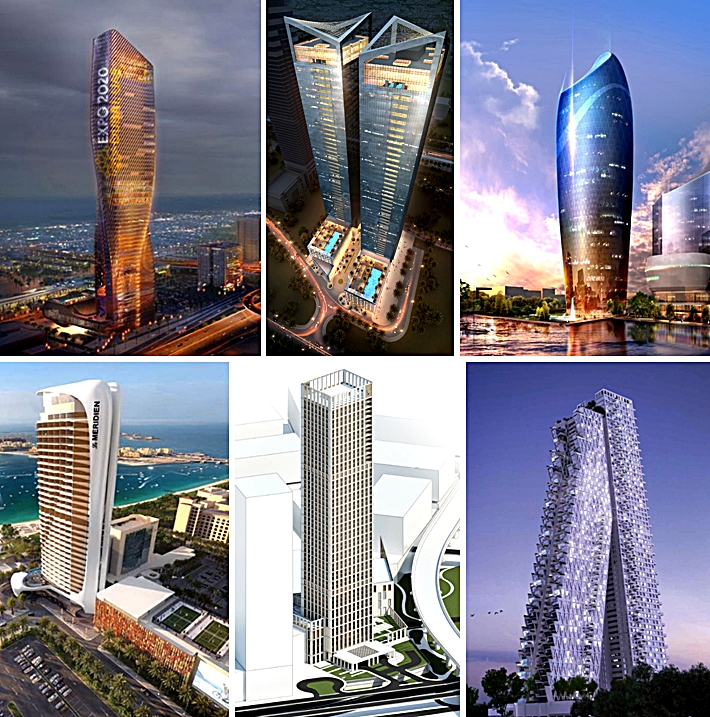
The complex correlation between reinforced concrete shear walls, steel frames and outriggers in modern skyscrapers was demystified by one of the world’s leading structural engineers at a professional forum in Colombo recently.
Using case studies of some of most remarkable high rises under construction around the world, Predrag Eror, Principal of Derby Design Engineering and the Structural Engineer of Altair, explained how structural design principles enable tall buildings to sway with no compromise to their integrity.
Mr Eror was an invited speaker at ‘Vision for High Rise Buildings – 3’ organised by the Society of Structural Engineers Sri Lanka (SSESL). His presentation on ‘Structural Systems for High-rise Buildings’ was attended by 240 engineering professionals and students and included an hour devoted to questions and answers.
“I was impressed with the depth of interest in the subject and the enthusiastic engagement of the audience,” Mr Eror said. “Naturally, there was extra interest in the design elements of the Altair building, which is one of a kind, and one of the most interesting constructions I have been involved with in my 30 years as a structural engineer.”
The six buildings presented as case studies in complex design principles were 2020 Tower in Dubai (300 metres; 63 floors), Tiara United Towers also in Dubai (225 metres; 62 floors), Crescent City Tower in Baku, Azerbaijan (210 metres; 43 floors), Vida Dubai Creek Harbour building (210 metres; 52 floors), Mina Seyahi Le Meridien Hotel extension (127 metres; 31 floors) and Altair in Colombo (230.1 metres; 68 floors). Predrag Eror is the structural engineer for all of these edifices.
While explaining the design principles and laws of physics that apply to the commonest types of structural systems followed in the construction of high-rise buildings, Mr Eror stressed that the structural engineer’s responsibility is not only to design the structure for permanent loading conditions, but to provide the initial idea on how the building is to be constructed, develop methods of construction, check all stages of construction, and actively work and assist the builder during the construction process.
“With Altair for example, Derby Design Engineering was involved even before the architect was appointed, and has been engaged in testing and monitoring every stage and element of the construction, including piling, floor slabs, staircases and bridges,” Mr Eror said, disclosing that in-depth research was conducted into high-grade concrete, as a result of which Altair was built with a concrete conforming to the highest British standard, a grade previously unused in Sri Lanka.
Altair comprises of two structures, one a 230.1 meter vertical tower and the other a tower that is inclined from level 5 to level 39 and goes vertical up to roof level at a height of 209.1 metres. The inclined or stepping tower has an angle of 13.8 degrees from the vertical and leans towards the vertical tower. The towers are connected by steel outriggers at four points at levels 39 and 41.
Each tower is supported by external walls and internal core walls forming a three dimensional structured frame. These walls are in the range of 350-500 mm thick. Above the podium level, the external walls are transferred via transfer beams which are also supported by reinforced concrete columns and reinforced concrete walls at podium level.
The external frame of the vertical tower comprises of reinforced concrete spandrel beams and reinforced concrete columns supported by transfer beams at Level 5 of the podium. The external frame of the inclined tower is composed of diagrid members made of steel columns which are supported by transfer beams also at Level 5.
“There was a lot of interest in the diagrid structure of the inclined tower, in how the two towers are connected together, how they work together and how they work independently,” Mr Eror said.
He said the interest shown by structural engineers in Sri Lanka mirrors the reaction the Altair building generates among those who see images of it around the world. “Every modern technique and idea seen in high rise buildings around the world has been applied here,” he said, revealing that he has spent 50 per cent more time on Altair than on the most complicated building he has worked on to date.
“In Dubai, I was told that if this building had been located in the Marina, it would have sold out in two days,” Mr Eror added.
His company Derby Design was established in 1977 in the United Kingdom, opened its Abu Dhabi office in 1980 and its office in Dubai in 2008. It is an international consultancy providing multidisciplinary design and project management services to the property and construction sectors in the United Kingdom, Middle East and Asia. The iconic buildings that Predrag Eror and Darby Design have been structural design engineers for include Gemstone Service Apartments in Dubai (66 storeys), Gilan Residential Towers in Azerbaijan (52 and 33 storeys), Urbana Residential Development Kolkata (seven towers of 41 and 46 storeys), Quipco Office Tower in Doha (52 stories), Al Bidda Tower (a 46 storey twisted tower) also in Doha, Wow Hotel & Residencies Dubai (70 stories) and Crescent Offshore Development in Azerbaijan (a 27-storey crescent-shaped tower).


